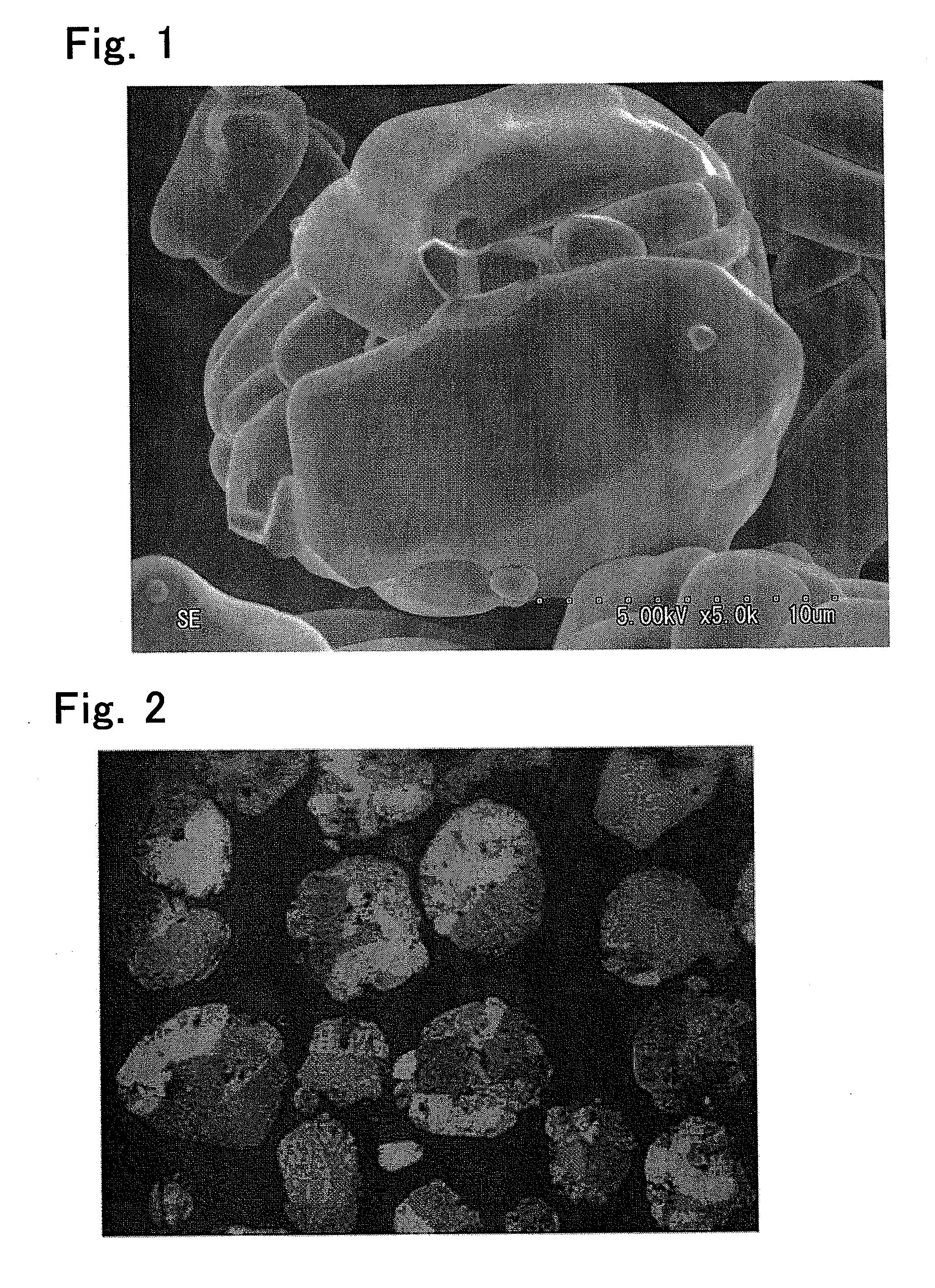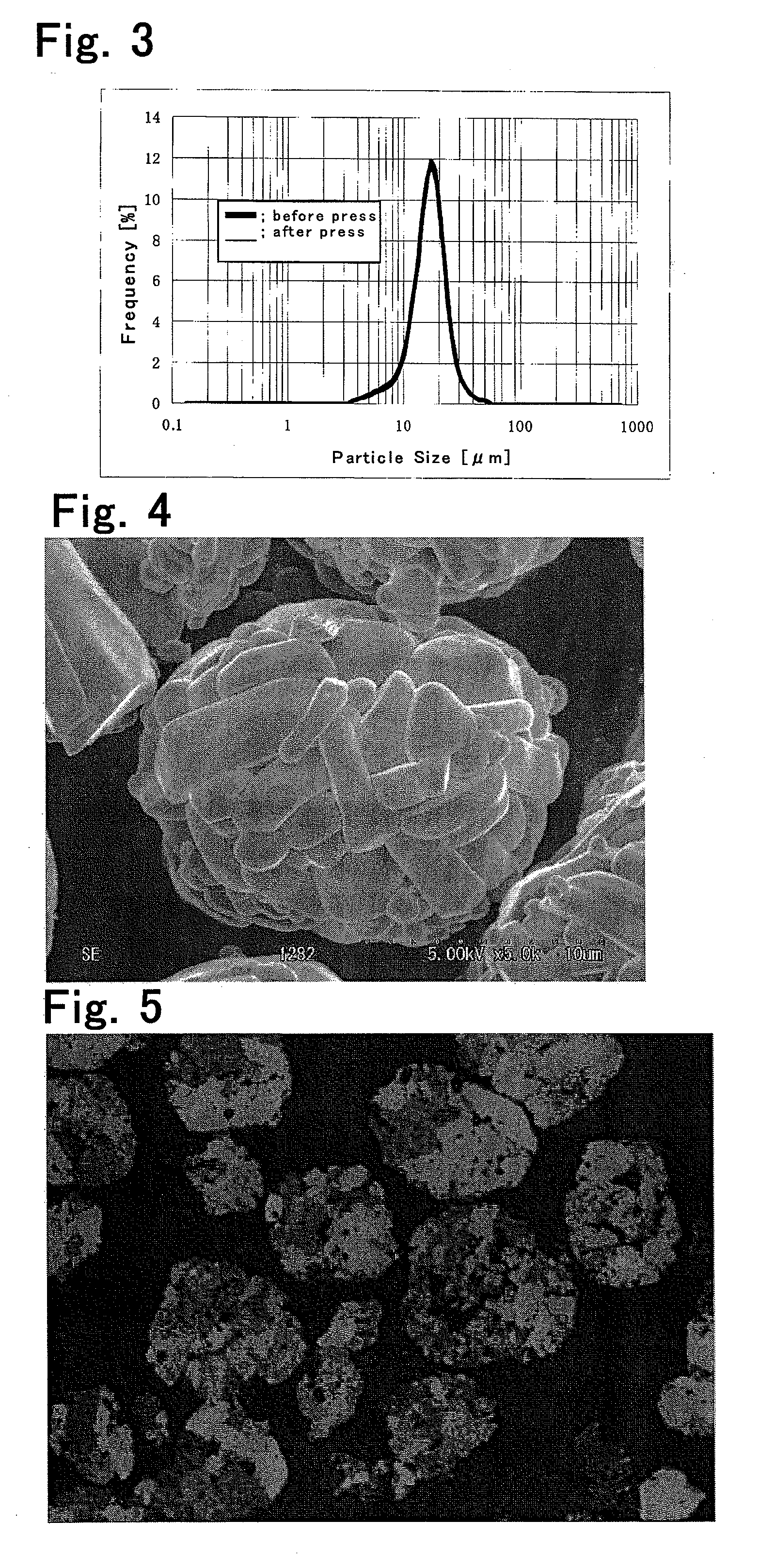Positive electrode active material for nonaqueous electrolyte secondary battery, positive electrode and secondary battery
a technology of nonaqueous electrolyte and active materials, which is applied in the direction of basic electric elements, electrochemical generators, cell components, etc., can solve the problems of difficult to achieve cathode active materials, difficult to achieve binders, and difficult to increase fluidity over time, so as to improve load characteristics, excellent dispersibility and fluidity, and excellent stability
- Summary
- Abstract
- Description
- Claims
- Application Information
AI Technical Summary
Benefits of technology
Problems solved by technology
Method used
Image
Examples
example 1
[0088]Lithium carbonate and cobalt oxide A at a ratio of Li:Co=1.0050:1.0000 were measured out, and mixed in a high-speed stirring mixer. The resulting mixture was calcined in a box-shaped electric furnace at 1030° C. for 6 hours, and passed through a 200 mesh sieve, to thereby obtain a cathode active material. Photocopies of a SEM image of the electrode active material and a polarizing micrograph of a cross-section of the material are shown in FIGS. 1 and 2, respectively.
[0089]The obtained cathode active material were measured for aspect ratio, average number A represented by formula (1), maximum and minimum particle diameters of the secondary particles, peak in the particle size distribution curve, specific surface area, alkalinity, compact density, and D10's before and after the compact density measurement. The results are shown in Table 2. The change in D10 before and after the compact density measurement is shown in Table 3. The particle size distributions before and after the ...
examples 3 , 4
Examples 3, 4, and 5 and Comparative Example 3
[0096]Cathode active materials were prepared in the same way as in Example 1, except that in Example 3 cobalt oxide B was used as cobalt oxide; in Example 4 cobalt oxide B was used as cobalt oxide, and the ratio of lithium carbonate and cobalt oxide B by mass was Li:Co=0.955:1.000; in Example 5 cobalt oxide B was used as cobalt oxide, and the mixture of lithium carbonate and cobalt oxide B was calcined at 1050° C.; in Comparative Example 3 cobalt oxide B was used as cobalt oxide, the ratio of lithium carbonate and cobalt oxide B by mass was Li:Co=0.955:1.000, and the mixture of lithium carbonate and cobalt oxide B was calcined at 930° C. The resulting cathode active materials were subjected to the measurements and evaluation in the same way as in Example 1. The results are shown in Tables 2 and 3.
example 6
[0097]A cathode active material was prepared in the same way as in Example 1, except that cobalt oxides A and C were used as cobalt oxide at a ratio of 0.75:0.25 by mass. The resulting cathode active material was subjected to the measurements and evaluation in the same way as in Example 1. The results are shown in Tables 2 and 3.
PUM
 Login to View More
Login to View More Abstract
Description
Claims
Application Information
 Login to View More
Login to View More - R&D
- Intellectual Property
- Life Sciences
- Materials
- Tech Scout
- Unparalleled Data Quality
- Higher Quality Content
- 60% Fewer Hallucinations
Browse by: Latest US Patents, China's latest patents, Technical Efficacy Thesaurus, Application Domain, Technology Topic, Popular Technical Reports.
© 2025 PatSnap. All rights reserved.Legal|Privacy policy|Modern Slavery Act Transparency Statement|Sitemap|About US| Contact US: help@patsnap.com



